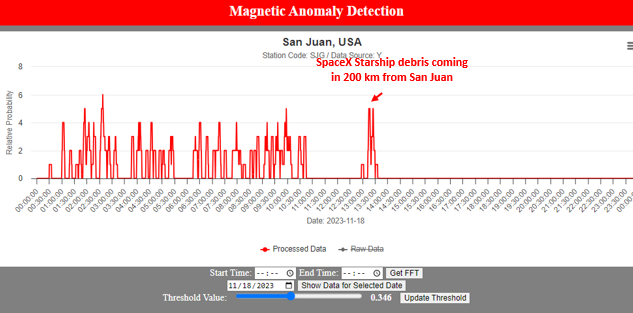Eventually there will be an FQ answer. But not yet.
Maybe we need a new forum category called “Soon to be Factual Questions” ![]()
Eventually there will be an FQ answer. But not yet.
Maybe we need a new forum category called “Soon to be Factual Questions” ![]()
Publicly, that’s not true. There’s no meaningful criticism:

Privately, I suspect it’s even less true.
NASA has learned a very clever trick. They know that for internally developed programs such as SLS, they can’t afford any public failure at all. So programs get delayed by years and cost billions more than they should because less than perfection carries a real risk of program cancellation, or at least having Congress mess with their funding allocation.
They also know that they can’t achieve meaningful progress without iterative development. SLS was bolted together from the Space Shuttle parts bin and still cost tens of billions to develop and multiple billions to launch. A true next-generation vehicle, with new engines, a new reuse strategy, and so on simply can’t be developed that way.
What NASA found, through SpaceX, is that they can outsource the bad publicity. The failures get pinned on SpaceX, or even better, Elon himself. The media does their thing and the heat is taken off NASA. NASA eventually gets their low-cost, high performance vehicle, which could only ever have been developed through failure.
The shame is that they still have to fund programs like SLS to satisfy Congress, but that’s just the price that has to be paid.
NASA is undoubtedly very satisfied and impressed with the improvement over IFT-1. Every aspect of the flight was a massive step forward, and there were no problems that would likely cause further regulatory delays. They know that rapid iteration is key, and it looks now that SpaceX will be able to improve their pace of flight tests. They already have a few vehicles waiting to fly and will do so in less time than the last delay.
Yeah. All 33 engines lit and stayed lit until the flip, the Starship engines all ignited, the booster survived the hot staging and began its flip to boost back, and Starship attained orbital altitude and near orbital speed. Also, the Flight Termination System worked properly, and the pad appears largely undamaged.
All of the problems of the last flight seem to have been solved, and new problems uncovered in the next regime. That’s expanding the envelope, and it’s significant progresss. Odds are better now that the next flight achieves orbit.
One other problem still remaining to be solved: The attachment of the Thermal Protection System still needs work. Video showed a number of tiles missing from Starship just before staging. If tiles are coming off on ascent, they aren’t even close to being robust enough to handle reentry.
Yeah–I wonder though if it can survive the loss of a few isolated tiles. STS-27 survived reentry with the loss of one tile and damage to hundreds more. It got lucky in that the lost tile had a robust hunk of aluminum behind it that acted as a heatsink. Starship has stainless steel (which can survive higher temps) and behind it, pressurized gases that should be able to move some heat away.
There are limits, of course, but it wouldn’t shock me if losing a few tiles isn’t a problem. Especially in the less-critical areas.
A neat side-by-side of IFT-1 vs. IFT-2:
The flight looks much healthier from the start, accelerating nearly twice as fast, with the difference getting even greater later in the flight.
The way to make a safe vehicle is to make one that fails a whole bunch of times before you’re relying on it, so you can figure out how it failed and how to prevent it.
As for the title question, there’s no sense in asking “Does it have enough fuel?”, or “Can it carry enough payload?”. That’s just rocket science; the answers to those questions have been known since before the first test. We already know that, if everything goes right, it can deliver its intended payload to its intended orbit. The question is just whether they can make everything go right.
Has SpaceX spoken to the fate of the upper stage (yet)?
No official statement as of yet. Someone did capture this amusing image:

That’s the front part of the Starship, sheared off from the rest but apparently otherwise intact. The front fell off!
The debris field was picked up on NOAA radar:

It pretty much matches expectations. Also detected by magnetic anomaly (I don’t know the details of this yet):

Overall, it all seems consistent with the flight termination system engaging about 800 m/s short of orbital velocity. Why, we can’t say yet, but Scott Manley noticed that the oxygen levels seemed to drop rapidly late in the flight, indicating a possible leak.
Well, it is about stuff that is happening in the real world, not just matters of opinion.
As the OP, I would like to be clear that I am 100% in favor of SpaceX’s work.
What prompted the original question was that it looked at the time as if the program might have stalled for some reason. And indeed it has taken longer than some of us hoped…
Sounds like MMPIMS is a much better fit if this just a news aggregation thread + glurge. But it’s not my website.
Also it seems to have become an ongoing discussion nexus with polite and informed contributions from posters who seem to me to have genuine scientific knowledge. An occasional digression seems fine.
I leave it to the moderators.
Oh for sure. It’s great that you guys have a brand that you support, love, and are rooting for, but I’d assume a thread cheerleading the exploits of Coca-Cola Company (even filled with posters with seem to have knowledge about chemistry and good science) isn’t really FQ kind of thing.
And that’s definitely a threadshit. If the topic doesn’t interest you, you are hereby invited to not participate. Actually, let me make that official: Do not participate.
EDIT: To clarify, that’s directed at @Chingon .
The camera angles have a definite “Saturn V” feel to them. Although you see photos from the launch tower all the time, Starship and Super Heavy have the mass and the bulk that call back to our prior generation of super-lifters.
And 33 beautiful engines burning so pure and clean. I’m so glad they got that working OK.
Has anyone seen any analysis on the launch platform’s condition? It seems like the suppression system worked ok, but I’d like some confirmation.
Musk tweeted:
Just inspected the Starship launch pad and it is in great condition!
No refurbishment needed to the water-cooled steel plate for next launch.
Congrats to @Spacex team & contractors for engineering & building such a robust system so rapidly!
RGV Aerial Photography also did a flyover and it looks pretty clean:

That is beautiful. During ascent I was admiring the symmetry and quality of the Mach shock diamonds in the exhaust plume. Totally stable and symmetrical despite 33 spatially-discrete origins. Stage 1 was working perfectly. SpaceX has a LOT to be proud of there.
So what’s all that fuzzy cloudiness along the length of the rocket? Water from the launch-pad protection system that got entrained with the rocket?
Very clean look at the mach diamond here:

Probably the largest human-made mach diamond in history. Though there are some rather larger interstellar-scale ones from various cosmic processes.
nm discourse